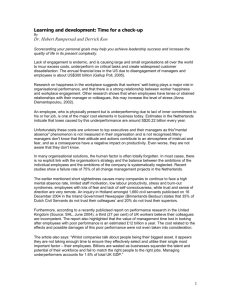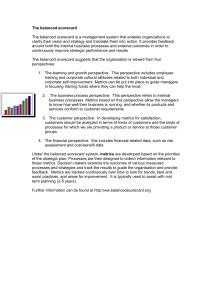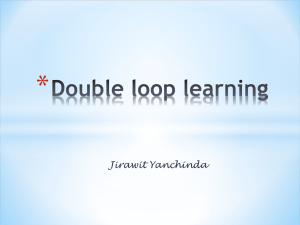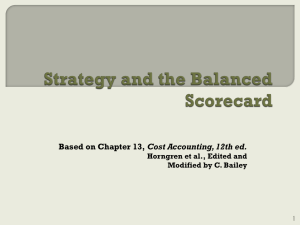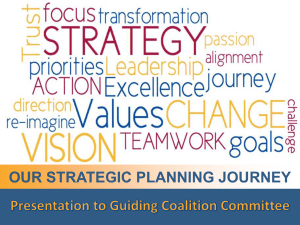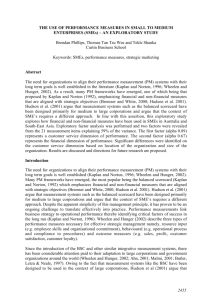STRATEGY MAPS
advertisement
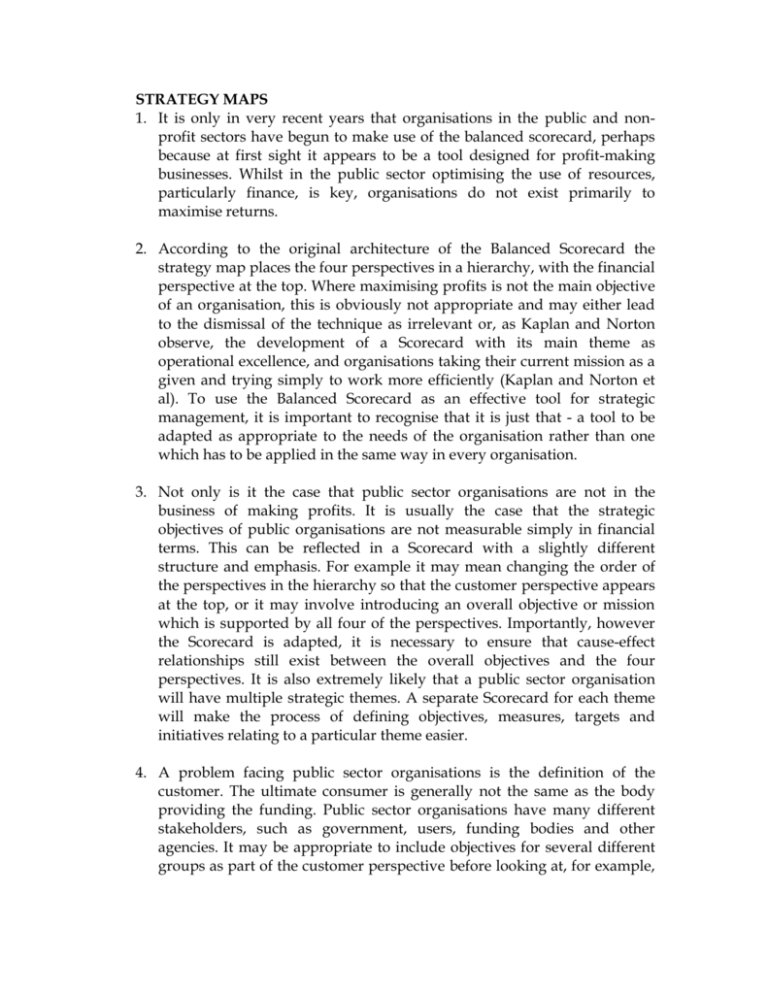
STRATEGY MAPS 1. It is only in very recent years that organisations in the public and nonprofit sectors have begun to make use of the balanced scorecard, perhaps because at first sight it appears to be a tool designed for profit-making businesses. Whilst in the public sector optimising the use of resources, particularly finance, is key, organisations do not exist primarily to maximise returns. 2. According to the original architecture of the Balanced Scorecard the strategy map places the four perspectives in a hierarchy, with the financial perspective at the top. Where maximising profits is not the main objective of an organisation, this is obviously not appropriate and may either lead to the dismissal of the technique as irrelevant or, as Kaplan and Norton observe, the development of a Scorecard with its main theme as operational excellence, and organisations taking their current mission as a given and trying simply to work more efficiently (Kaplan and Norton et al). To use the Balanced Scorecard as an effective tool for strategic management, it is important to recognise that it is just that - a tool to be adapted as appropriate to the needs of the organisation rather than one which has to be applied in the same way in every organisation. 3. Not only is it the case that public sector organisations are not in the business of making profits. It is usually the case that the strategic objectives of public organisations are not measurable simply in financial terms. This can be reflected in a Scorecard with a slightly different structure and emphasis. For example it may mean changing the order of the perspectives in the hierarchy so that the customer perspective appears at the top, or it may involve introducing an overall objective or mission which is supported by all four of the perspectives. Importantly, however the Scorecard is adapted, it is necessary to ensure that cause-effect relationships still exist between the overall objectives and the four perspectives. It is also extremely likely that a public sector organisation will have multiple strategic themes. A separate Scorecard for each theme will make the process of defining objectives, measures, targets and initiatives relating to a particular theme easier. 4. A problem facing public sector organisations is the definition of the customer. The ultimate consumer is generally not the same as the body providing the funding. Public sector organisations have many different stakeholders, such as government, users, funding bodies and other agencies. It may be appropriate to include objectives for several different groups as part of the customer perspective before looking at, for example, the internal processes required to meet the objectives of each different group. 5. The following basic example illustrates the points above: The Scorecard for a government-funded provider of healthcare might include: Mission To provide the best possible care for patients suffering from cancer Customer (stakeholder) perspective _ Maximum quality of life _ Ease of access to specialist advice for GPs Internal perspective _ Effective working with other agencies _ Effective clinical audit and quality improvement processes Learning and growth perspective _ Continuing professional education for all staff _ Good communications across different disciplines Financial perspective _ Ensure adequate funding for all services _ Ensure continuing resources for research and development of new treatments The basic template of strategy maps 6. A strategy map provides a visual framework for an organization’s strategy – how it intends to create value. Specifically, a good strategy map will link together: 1. The desired productivity and growth outcomes. 2. The customer value proposition which will be needed. 3. Outstanding performance in internal processes. 4. The capabilities required from intangible assets. 7. Practical guidance on the Balanced Scorecard strategy map The Balanced Scorecard translates vision and strategy into four perspectives: 1. Financial – How do we look to shareholders? 2. Customers – How do customers see us? 3. Internal business perspective -- At what must we excel? 4. Learning and growth. To achieve our vision, how will we sustain our ability to change and improve? INDIRECT INFRASTRUCTURE ASSET 8. To define, measure, and manage the readiness of each type of intangible asset, different approachwill be required for each: 9. Picture belows is a strategy maps of Ministry of Finance for 2005-2009 Goals and Objectives • Fiscal sustainability • Good Governance Financial Perspective B Quality of Services Maximum Revenue Expenditure Efficiency Public Image Govt. Expenditures Reform Learning and Growth Perpective System & Procedure Aspects Govt. Revenues Reform Internal Process Perspective Infrastructure Aspects Human Capital Information Capital Organization Capital Govt. Fincl & Asset Mgt. Reform Legal Aspects Customer Perspective




